5 Reasons to Mix Diatomaceous Earth With Soil
If you’re looking for a natural way to improve your soil and promote healthy plant growth, you may want to consider mixing a little diatomaceous earth (DE) with your garden or potting soil.
DE is a powdery substance made from the fossilized remains of diatoms, a type of single-celled organism.
Diatomaceous earth is well-known for its pest control properties, but DE can also be used as a natural soil amendment due to its mineral content and its ability to improve soil structure, increase nutrient uptake, improve water retention and drainage, and enhance overall plant growth.
DE contains silica, calcium, magnesium, and iron, all of which are important nutrients for plant growth and development.
Additionally, DE can improve soil structure by reducing compaction and increasing soil porosity, which makes it easier for plant roots to absorb water and nutrients, and it can be used as a natural pest management measure since it can dry out and damage the exoskeletons of various garden pests.
In this article, I’ll cover these important topics:
- reasons why you might consider adding diatomaceous earth to your garden soil.
- ways to add DE to your soil safely and effectively.
- suggestions to help you avoid over-using DE in your garden.
I’ll explain in more detail why mixing diatomaceous earth with soil can be beneficial and provide tips on how to do it effectively.
Can I Add Diatomaceous Earth to My Garden Soil?

This post may contain affiliate links. Please see my disclosure to learn about the care I take when recommending products to my readers.
- In 2019, scientists found that adding DE to soil improved the overall growth of several plant varieties as well as increased plants’ ability to uptake calcium, magnesium, nitrogen, phosphorus, and potassium as well as their increased tolerance to water stress.
- In 2020, researchers discovered that using DE can possibly help plants grow better in saline (or salt-heavy) soil. This is important because saline soil can make it difficult for plants to grow and thrive.
- In 2021, this study showed that DE, when added to clay soils, helped decrease its overall compactness while increasing water retention rates. This is especially important for commercial planters who use large machinery in their fields since that tends to compact the soil.
I’ve read lots of research about diatomaceous earth, and here’s the 5 main reasons why you should consider adding some to your soil.
DE had been shown to:
- enhance soil structure
- improve water retention and drainage
- increase nutrient availability
- provide essential minerals
- help with organic pest control
Before I look at each in detail, I’d like to share a few research findings that’ll help you understand the science behind diatomaceous earth:
These are just a few of the studies I’ve seen, but I’m cautiously optimistic that DE is a good overall soil amendment.
I say “cautiously optimistic” because I think there’s still lots we don’t know about DE, and we’ll need many more studies to shed further light on what exactly it does when added to soil at different levels and in different regions.
But the science seems to be pointing to the fact that DE can help soil in several different ways.
So let’s take a closer look at each of these so that you’ll understand exactly why adding DE to your soil might be a good idea.
1. Enhances Soil Structure
When it comes to soil structure—that is, the way your soil’s particles are bound up with each other underneath the surface of the ground—diatomaceous earth can be an excellent natural solution for improving it.
I’ve got lots of hard-packed clay on my property, so I’m constantly trying to figure out ways to improve things, either by amending the soil or installing raised garden beds.
When you mix DE with your garden soil, it’ll create small microscopic channels that allow air and water to move through the soil more easily. This could result in better soil aggregation, allowing plant roots to grow more freely and access more nutrients.

It might also help reduce soil compaction, which is particularly important in clay soils that tend to become hard and compacted over time.
2. Improves Water Retention and Drainage
Adding diatomaceous earth to garden or potting soil can potentially increase water retention and drainage.
On the one hand, the porous nature of DE means that it can hold on to water and nutrients, releasing them slowly to plants over time. This is especially beneficial in sandy soils that drain too fast or in plastic containers where water tends to evaporate quickly.
On the other hand, the addition of DE might improve drainage, allowing water to move through the soil more freely. This not only helps prevent waterlogged soil but also allows plants to access moisture more effectively.
It’s worth noting that the amount of DE added to the soil can affect its water retention and drainage properties. Too much DE can cause water retention issues, while too little will not have a noticeable effect.
You’ll want to find the right balance based on the specific needs of your plants and the soil conditions on your property, so I recommend starting small and experimenting with different applications.
3. Increases Nutrient Availability
Although diatomaceous earth doesn’t contain significant amounts of nitrogen, phosphorus, or potassium, it can possibly help plants absorb these and other essential nutrients more efficiently.
One of the ways that DE does this is by increasing nutrient availability in the soil.
The soil on your property is a complex mixture of mineral particles, organic matter, and living organisms like bacteria, fungi, and earthworms. Within this complex ecosystem, the availability of nutrients can vary greatly, depending on the interactions between the various components.
For example, some nutrients in the soil may become bound up with other compounds, making them unavailable to plants for a time. Other nutrients may leach out of the soil due to overwatering or heavy rain.
In some cases, plants may have difficulty absorbing certain nutrients due to soil pH, compaction, or other factors.
To give just one example, if you add lots of unaged compost or wood chips to your garden beds, you potentially tie up nitrogen molecules for a time.
Those nitrogen molecules don’t disappear. They’re just unavailable to your plants until further decomposition releases them into the soil in a way that plants can subsequently uptake them.
From the research I’ve seen so far, it appears that diatomaceous earth can help increase nutrient availability in a few ways.
What It Does: The Results
| 1 | DE has a high surface area, which means it can attract and bind to positively charged ions in the soil, including some of the essential plant nutrients like nitrogen, phosphorus, and potassium. | By binding these nutrients to itself, DE can prevent them from becoming bound up with clay particles or other organic matter. As a result, the nutrients remain more available for plants to absorb. |
| 2 | DE can help improve soil structure and increase soil porosity. When soil is compacted, it can be more difficult for plant roots to access nutrients, water, and oxygen. | By improving soil structure and increasing soil porosity, DE can create a more hospitable environment for plant roots. |
| 3 | DE can provide a source of beneficial minerals like calcium, iron, magnesium, and silica. | These minerals help support plant growth and development. |
While DE may not contain significant amounts of nitrogen, phosphorus, or potassium, it can play an important role in improving nutrient availability and supporting healthy plant growth over time.
4. Provides Essential Minerals
In the table above, I noted that diatomaceous earth can be a decent source of essential minerals for plant growth, including calcium, iron, magnesium, and silica.
Silica, in particular, is a critical nutrient that’s often overlooked in gardening since it can strengthen the plant’s cell walls and make them more resistant to pests and diseases.
As research has shown, silica also improves plant drought tolerance, helping plants to better withstand periods of dry weather.
In terms of the other minerals:
- Calcium is essential for strong cell growth and healthy roots.
- Iron is crucial for chlorophyll production. It’ll also help with nitrogen fixation, which is essential for plant growth.
- Magnesium is also necessary for the production of chlorophyll.
- Silica helps plants handle environmental stress from drought, soil salinity, or heavy metals.
By adding DE to your soil, you can provide your plants with these vital minerals, which could possibly help them grow healthier and stronger.
Please note that the mineral content of DE can vary depending on the source, so please be sure to choose a high-quality food-grade DE product to ensure that you’re getting the most benefits for your plants.
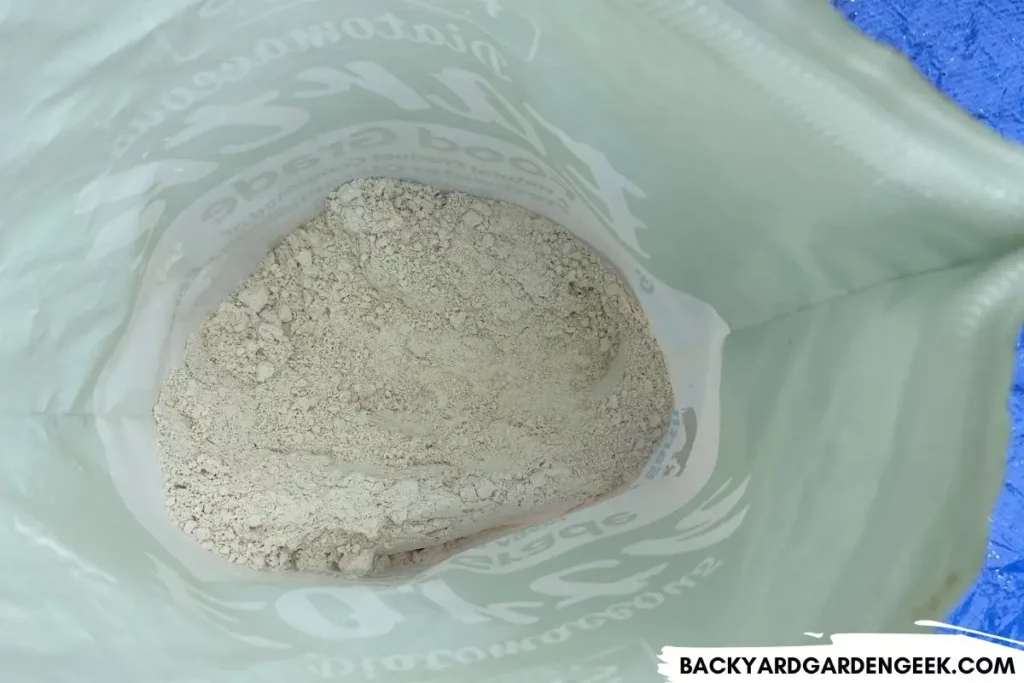
I think highly of the Harris brand. Buy the 10-pound bag since you’ll save some money that way, and you can store it in your shed or garage just fine.
5. Helps with Organic Pest Control
Another benefit of mixing diatomaceous earth with soil is its natural pest control properties.
DE is made up of microscopic silica particles with sharp edges that can scratch and damage the exoskeletons of insects while absorbing liquids and fats, causing them to dehydrate and die. This makes DE particularly effective against soft-bodied insects such as aphids, caterpillars, spider mites, and thrips.
When it comes to earthworms, I’ve seen no studies that have suggested that DE might harm or kill these garden friends.
In fact, one group of researchers tracked what happened to the intestines inside earthworms when the worms ingested DE. Their conclusion: DE didn’t harm the worms, but the worms weren’t a fan of it either and expelled it from their bodies within 2 hours.
Until I read a scientific study that suggests otherwise, I’ve come to think that the oozy exterior of earthworms offsets the effects of DE since those microscopic particles don’t seem to penetrate the skin or harm the worms, much like DE doesn’t appear to harm slugs or snails as well.
(Of course, if you’ve seen a scientific study that suggests otherwise, please contact me at john@backyardgardengeek.com and let me know!)
While DE is effective at controlling many garden pests, please note that it can also harm beneficial insects such as bees, lacewing, ladybugs, and many others.
With the exception of extreme infestations, I recommend using DE sparingly on your plants and only where necessary, so let’s look at the best ways to apply DE to your soil and plants.
How Do I Add Diatomaceous Earth to My Soil?
Now that we’ve discussed why you might want to mix diatomaceous earth with your garden soil, let’s look at the best ways to do so.
1. Mixing Diatomaceous Earth with Garden Soil
When it comes to mixing diatomaceous earth with garden soil, you’ve got a few options.
One of the easiest is to simply sprinkle a thin layer of DE on top of your soil and work it in with your hands or a garden fork or spade.
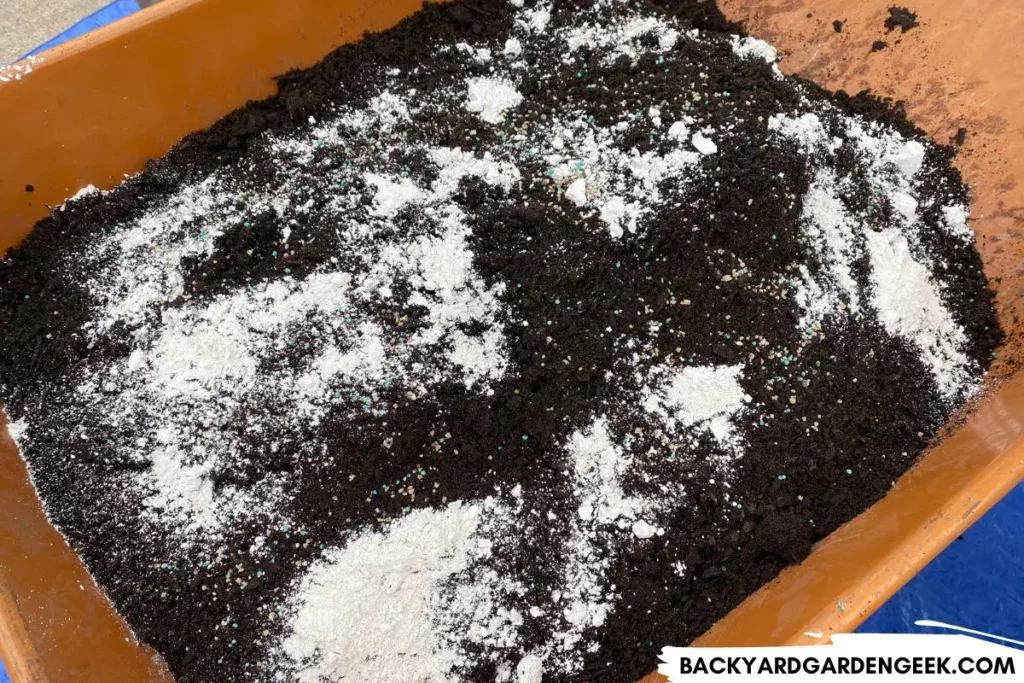
Be careful not to overdo it. I suggest starting on the lighter side of things, so a good rule of thumb is to use no more than 16 ounces (or around .5 liter) of DE per 50 square feet of garden space.
You might even experiment in your garden by adding smaller amounts of DE to certain garden beds, then tracking plant growth over the course of a season to see if you notice any differences between the amended and unamended soils.
I just filled several bins with new garden soil since I’d like to grow plants over in the corner of my backyard driveway, but the soil felt a bit dense when I was shoveling it into the bins. Along with some organic fertilizer and compost, I added a handful of DE to each bin.
2. Mixing Diatomaceous Earth with Potting Soil
Mixing diatomaceous earth with potting soil is similar to mixing it with garden soil, but it’s important to be more cautious since potting soil is typically contained in smaller areas like pots or containers.
To mix DE with potting soil, begin by filling your pot or container with potting soil as you normally would. Sprinkle a thin layer of DE over the top of the soil and work it in with your fingers or a small garden trowel.
Be careful not to overdo it, as too much DE might negatively impact your soil structure. For containers, a good rule of thumb is to use no more than 1 tablespoon (15 ml) of DE per gallon of soil.
3. Mixing Diatomaceous Earth with Seed Trays
When starting seeds, it’s important to ensure that your soil is healthy and free from pests and diseases.
Adding a small amount of diatomaceous earth to your seed trays should help your seedlings since the DE can impact fungus gnats and potentially help you avoid root rot.
I need to experiment more when it comes to using DE in seed trays, but in a few initial experiments integrating a bit of DE into my seed-starting soil, I noticed no problems whatsoever with my seedlings.
To mix DE with seed trays, work a little DE into your seed-starting mix. I recommend using a small amount your first time to ensure things proceed as normal with your seedlings.
For that initial trial, I’d use no more than 2 teaspoons (10 ml) per gallon of seed-starting soil. That way you’re erring on the more conservative side of things.
If you see that your seedlings are thriving at those levels, you can increase your DE to 1 tablespoon (15 ml) per gallon for the next batch of seeds.
In the absence of more scientific studies, I recommend experimenting with different DE applications since that’s the best way to learn what’ll work most effectively for you and your garden.
Can You Use Too Much Diatomaceous Earth on Plants?
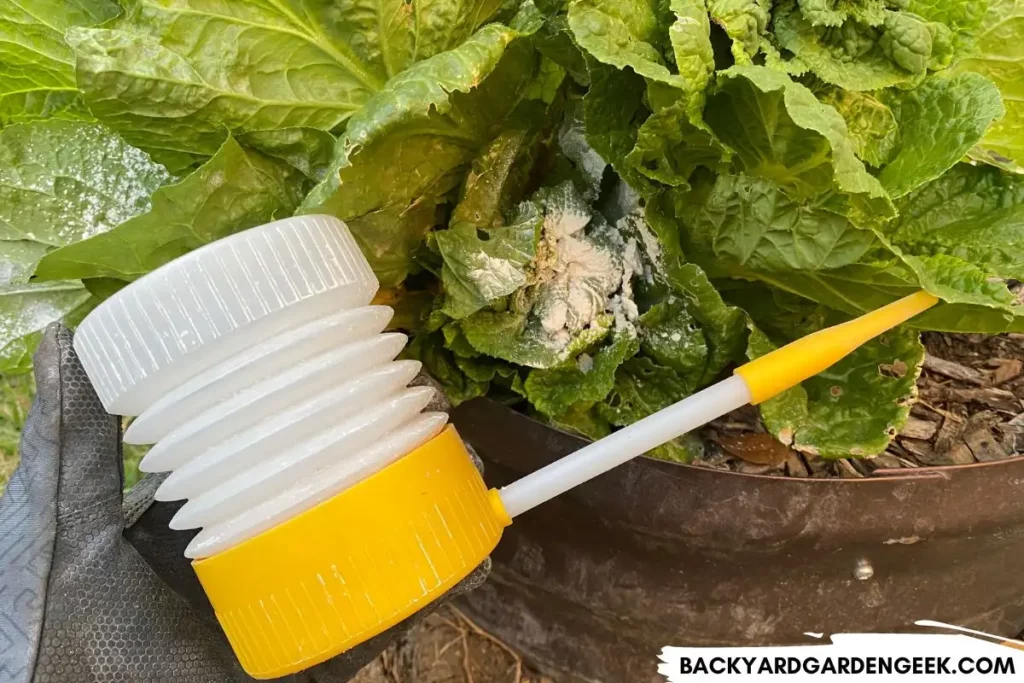
While diatomaceous earth can provide many benefits to plants, I always use it sparingly and in moderation, except in very rare circumstances where an infestation has gotten out of control.
As I’ve suggested in an article on whether or not DE can harm plants, most of the scientific evidence suggests that DE, when used in moderation, is perfectly harmless.
But there are a few things you’ll want to consider:
- DE has highly absorbent properties, so overusing it could potentially stress out your plants.
- If you don’t mix DE into your soil properly, you might have pockets where there’s lots of DE, which could cause too much water retention in certain areas of your garden and might encourage root rot there.
- When applying DE directly to your plants, especially if you use a bulb duster, you might cover your plants with it, which can choke their stomata (which they use to exchange oxygen and carbon dioxide).
- In doing so, you might even kill off beneficial insects who happen to get covered in the particles.
- DE could potentially alter your soil’s pH levels if you add far too much of it, making your soil a bit more alkaline than it would have otherwise been, but I haven’t yet seen any good scientific evidence so I’m cautiously optimistic that this is a rather rare thing.
I’ve heard some folks say that overusing DE can possibly impact the chlorophyll processes taking place in your plants, but I’ve only seen 1 scientific study that suggested such a thing.
I once had a very nasty flea beetle infestation on several tomato plants, and I had no choice but to go nuclear with my DE. I sprayed most of the plant with it…yikes!
Over the next few weeks, I noticed 3 things that happened:
- The plants’ growth slowed down, likely because I had stressed them out by covering them in so much DE.
- The flea beetles disappeared after a few days. They had overrun the plant, but now they were gone, and I was incredibly excited about that.
- After a few weeks, which included regular waterings and at least 1 rainstorm, the DE was mostly gone, and the plants seemed to grow as normal once again.
In other words, instead of losing both of my tomato plants to a flea beetle infestation, I temporarily stressed my plants by overusing DE on them. But because the DE took care of the flea beetles, and since it washes off easily, the plants were able to recover and continued producing tomatoes for me that season.
Generally speaking, I think highly of DE, but I’d advise you to use it in moderation and to follow all recommended guidelines on the packaging. You’ll also want to monitor your plants for signs of stress and adjust your DE usage accordingly.
But with these things in mind, DE can be a very useful tool in your garden, both as a soil amendment and as a pest management strategy.
Further Reading
Interested in learning more about DE, garden soil, or pest management methods? If so, you might like these related articles:
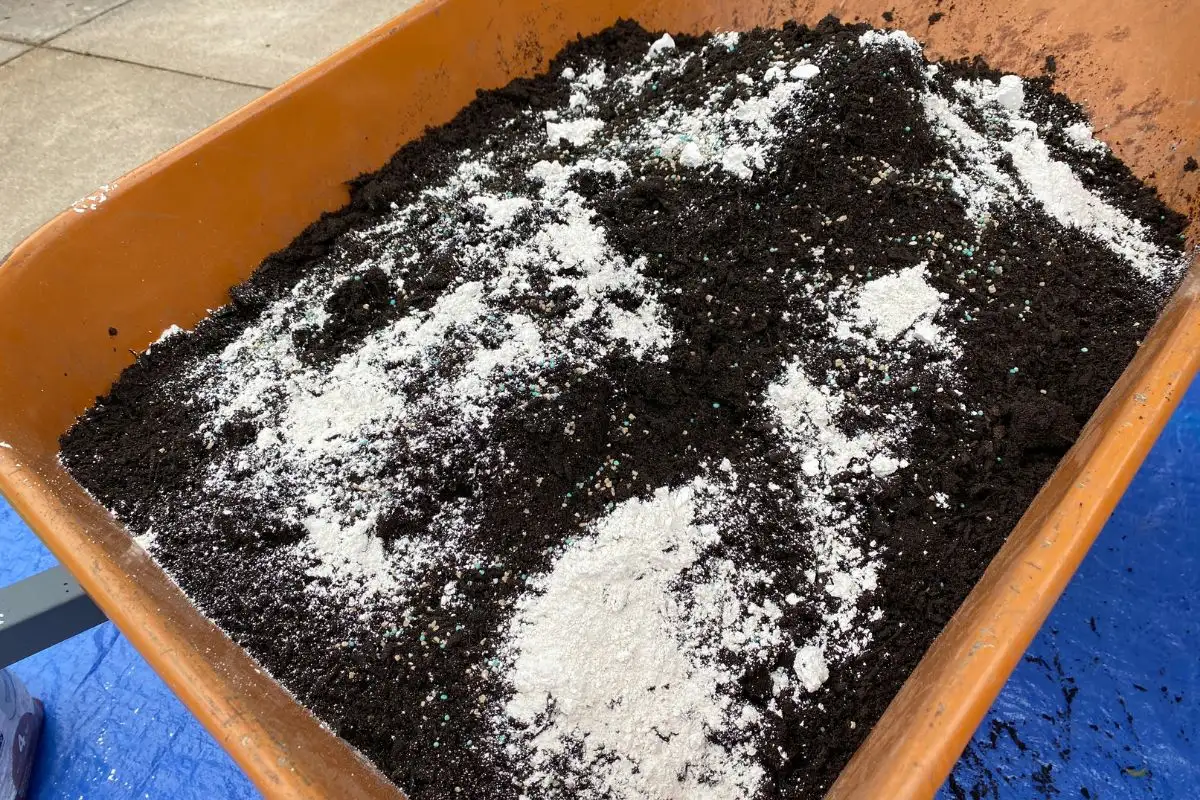
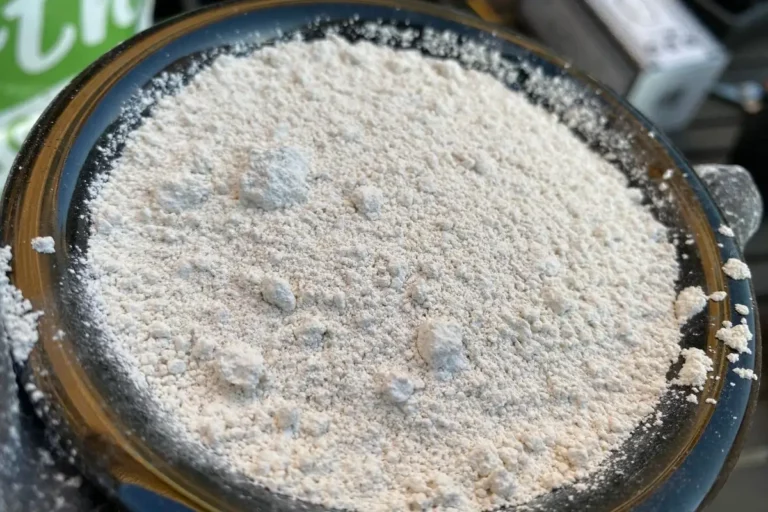

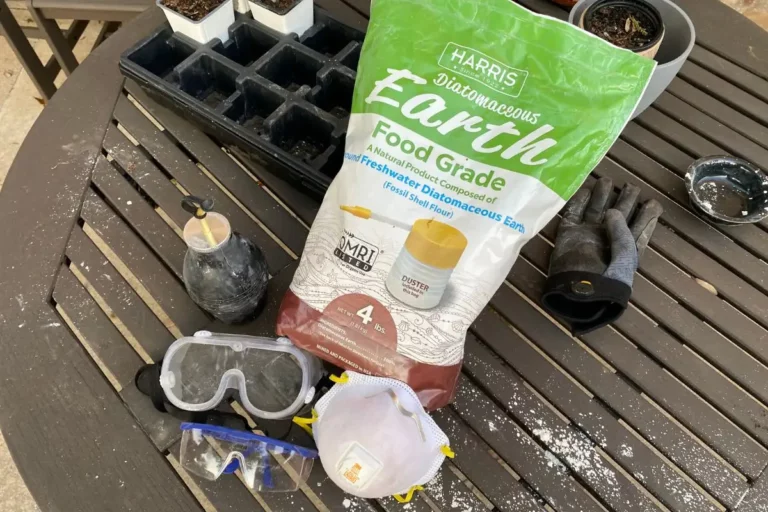
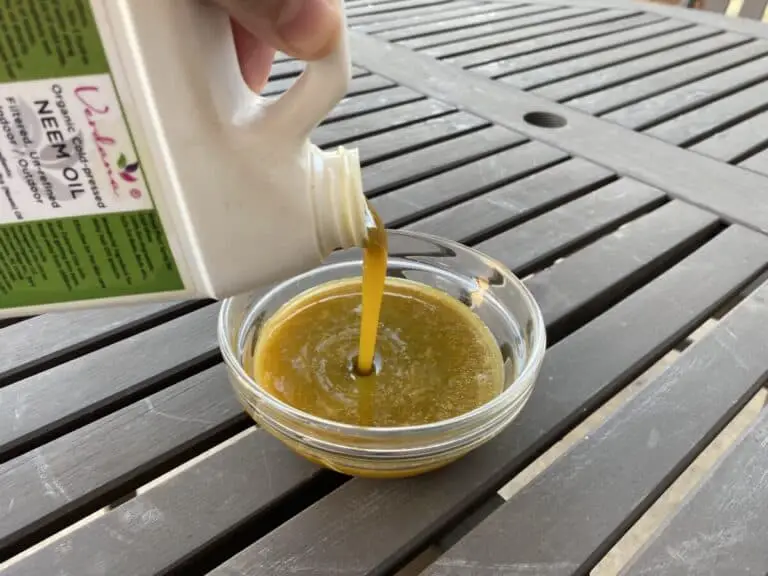
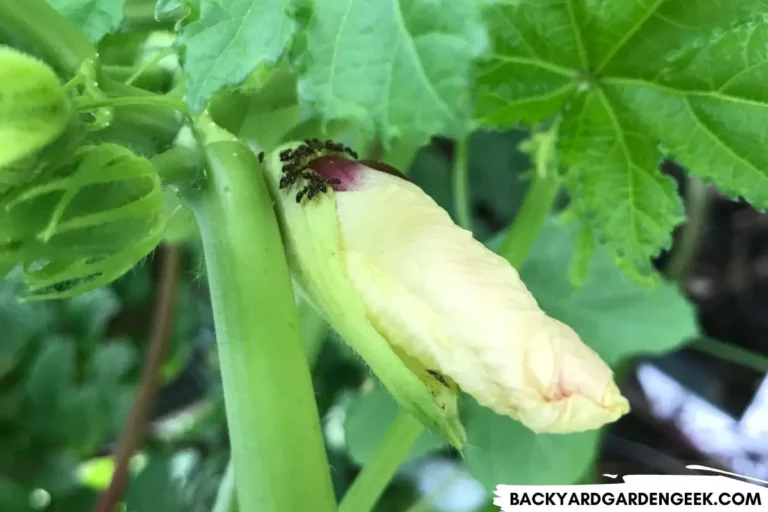
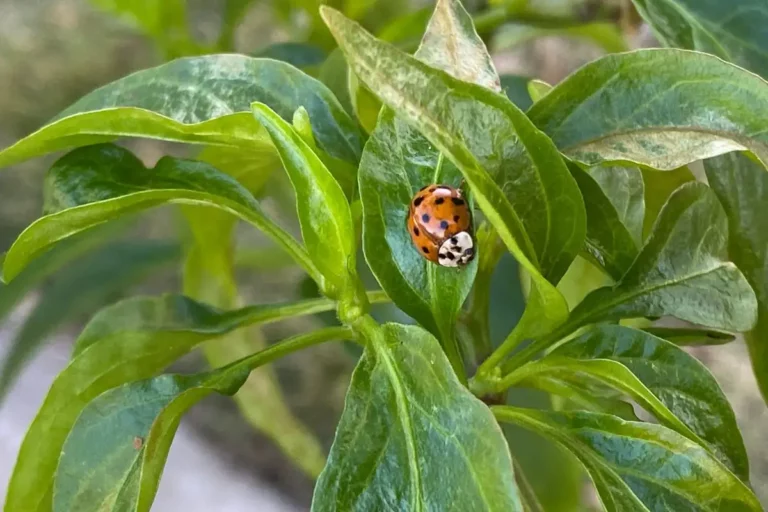
Thanks. This is helpful information. I just bought a large bag at my local feed store.
I look forward to using it to improve the health of my soil/plants.
Good luck! I recommend starting slowly, trying it out in select parts of the garden and seeing what the results are like. If you haven’t done a soil test in a while, you should also do that. Your state/regional extension office will usually do them for you. Ours in Texas only charges $25 or so for a very in-depth test.